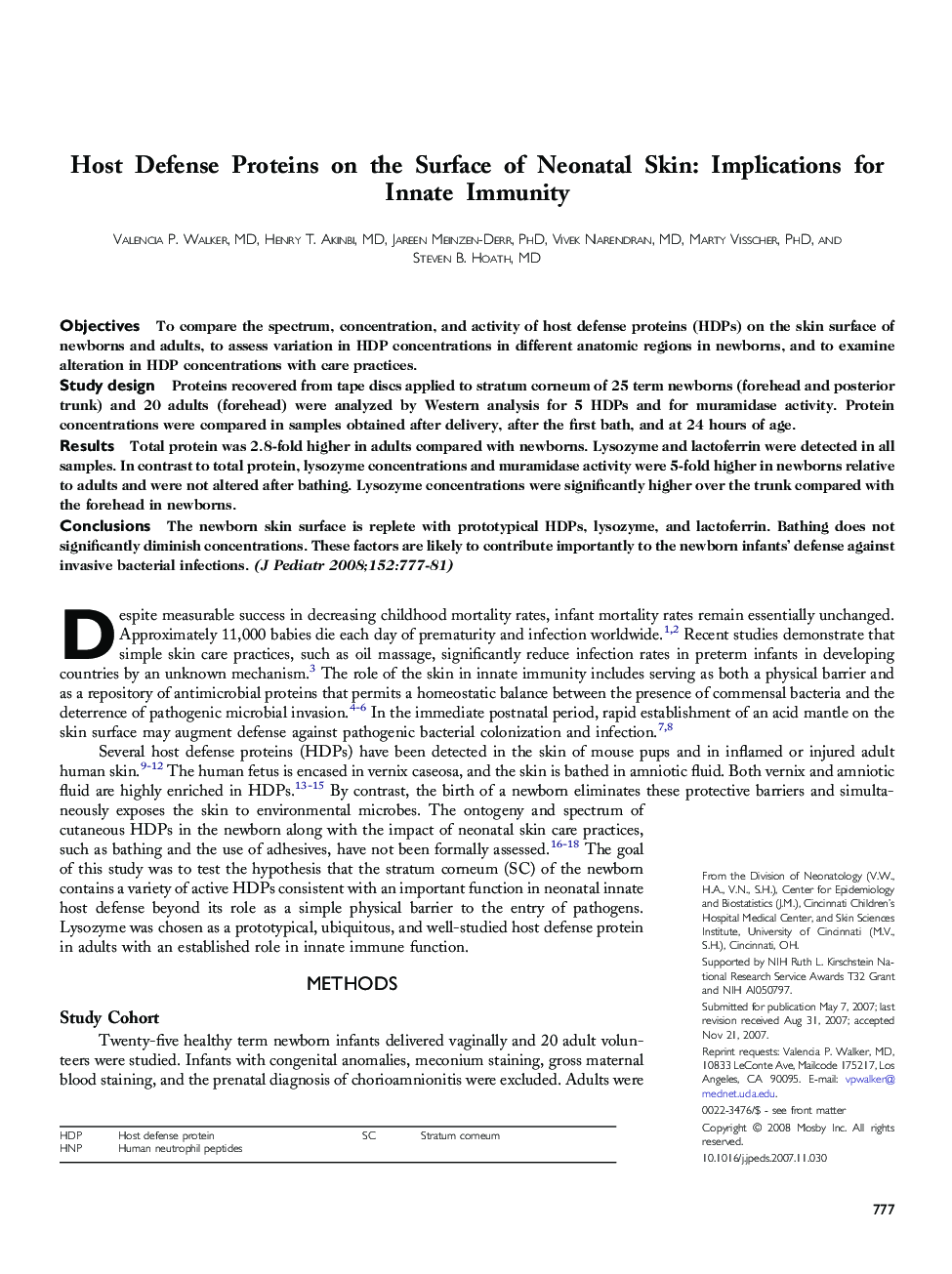| Article ID | Journal | Published Year | Pages | File Type |
|---|---|---|---|---|
| 4167226 | The Journal of Pediatrics | 2008 | 5 Pages |
ObjectivesTo compare the spectrum, concentration, and activity of host defense proteins (HDPs) on the skin surface of newborns and adults, to assess variation in HDP concentrations in different anatomic regions in newborns, and to examine alteration in HDP concentrations with care practices.Study designProteins recovered from tape discs applied to stratum corneum of 25 term newborns (forehead and posterior trunk) and 20 adults (forehead) were analyzed by Western analysis for 5 HDPs and for muramidase activity. Protein concentrations were compared in samples obtained after delivery, after the first bath, and at 24 hours of age.ResultsTotal protein was 2.8-fold higher in adults compared with newborns. Lysozyme and lactoferrin were detected in all samples. In contrast to total protein, lysozyme concentrations and muramidase activity were 5-fold higher in newborns relative to adults and were not altered after bathing. Lysozyme concentrations were significantly higher over the trunk compared with the forehead in newborns.ConclusionsThe newborn skin surface is replete with prototypical HDPs, lysozyme, and lactoferrin. Bathing does not significantly diminish concentrations. These factors are likely to contribute importantly to the newborn infants' defense against invasive bacterial infections.
